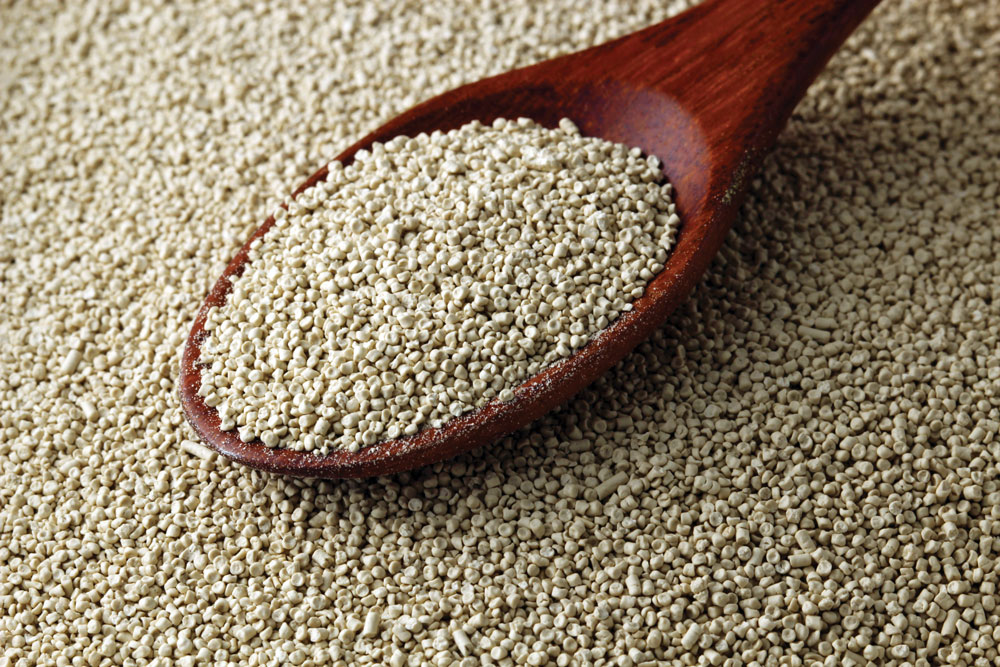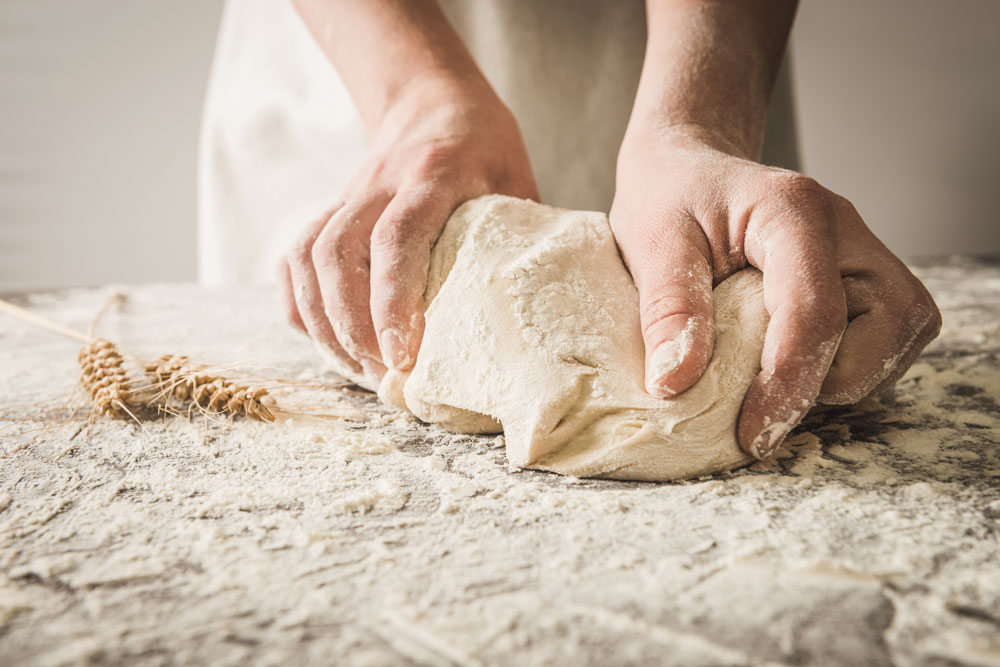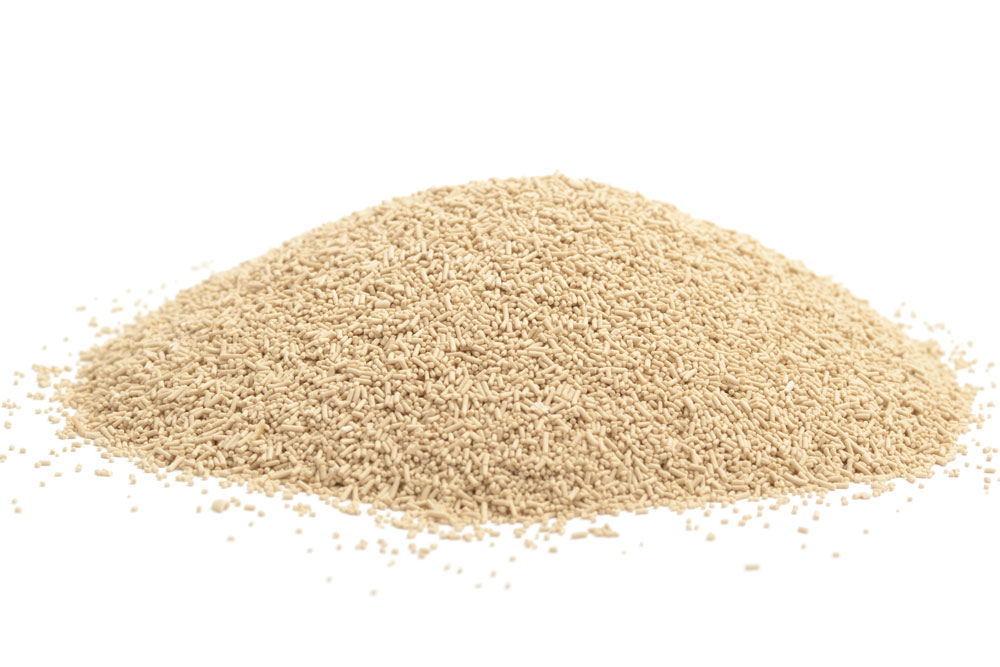Editor’s note: This article originally appeared in the November 2018 issue of PMQ and features quotes from Tom “The Dough Doctor” Lehmann, who has since passed away. Tom was a true servant leader in the pizza industry, and we’re certain he would want his advice and wisdom to continue to be shared with pizzaioli everywhere.
Yeast may seem like an unassuming ingredient, but it’s indispensable for making pizza—and a real multitasker, allowing dough to rise, contributing flavor and aroma, and making dough softer for stretching. While any of the three main types of yeast can create the results you desire for your crust, each dictates different operating procedures, sports a finite shelf life and requires specific storage needs. Here, experts break down the details of each type to ensure peak performance in your pizzeria.
Type Casting
There are three main types of yeast available to pizza makers: active dry yeast (ADY), instant dry yeast (IDY), and fresh, or compressed, yeast (CY). Tom “The Dough Doctor” Lehmann, a consultant to the pizza industry at Dough Doctor Consulting in Manhattan, Kansas, notes that two other types may be used in specific applications: protective ADY (PADY), used in dry mixes, and cream yeast, which is compressed before it’s centrifuged to pull off water, but not processed to make it a compressed type of yeast. However, pizzeria owners will mainly be concerned with ADY, IDY and CY.
The main difference between the three, Lehmann notes, relates to moisture content. CY contains very high moisture (70%), making it extremely perishable, so it must be maintained at refrigerated temperatures and has a limited shelf life. “Even leaving it on the counter for 20 to 30 minutes before putting it back in the refrigerator will affect the yeast activity,” Lehmann says. “And CY can’t come into contact with salt or sugar before mixing, so you can’t use it to make ‘goodie bags’ with a premeasured blend of ingredients to mix dough.”
Paul Bright, innovation manager at AB Mauri North America in St. Louis, clarifies that CY is the same type of yeast as ADY and IDY; it simply hasn’t gone through their drying process. “This yeast can be added after all other ingredients are added to the mixing bowl,” he says. “As a rough guide, the pizza dough maker would use one pound of fresh yeast for every 0.4 to 0.5 pounds of dry yeast.”
Originally designed for home, not commercial, applications, ADY has a long history in baking—and eventually found its way to pizzerias, thanks to its reliable performance. The one caveat: It must be hydrated before being added into a dough mixture. “That can be the Achilles heel for pizza makers, because you must hydrate in warm water with a definite temperature, usually between 100˚ and 105˚F,” Lehmann notes. “Some people just run their hand under water until it feels warm, but for accuracy the temperature must be measured.” Using water that is too cold or too warm can damage the yeast and lead to poor results. “This type has a reputation of being inconsistent, but it isn’t—as long as you handle it right,” Lehmann says.

Finally, IDY has been dried to a very low moisture content (6%), making it very stable, with a lengthy shelf life. Unlike ADY, IDY can and should be added dry, no prehydration needed; place it directly on top of the flour and mix. (The “instant” in IDY doesn’t refer to instant yeast activity, but instant hydration.) Thanks to its relative ease of use, IDY is the most popular choice for today’s pizza makers, but it’s still crucial to monitor water temperature. “Yeast is extremely sensitive, so if you use water at the incorrect temperature, you’ll lose yeast activity,” Lehmann says. “It’s especially sensitive to lower temps—so if you go 5˚F higher, it might not be a deal-breaker, but 5˚F lower can be.”
Despite their differences, when used properly, all three types of yeast offer the same results. “The great thing about fresh and dry yeasts is that they are the same species of yeast and therefore produce the same fermentation flavors and gassing activity levels,” Bright explains. “Once properly processed, depending if the yeast requires rehydration, dry blending or chilling prior to use, any yeast will function similarly in a dough.”
Shelf Life and Storage

The Color Code |
| Tom “The Dough Doctor” Lehmann, a consultant to the pizza industry with Dough Doctor Consulting in Manhattan, Kansas, notes that there are different types of instant dry yeast (IDY) on the market. “In the pizza industry, they’re labeled as red-label IDY and gold-label IDY,” he says. “Gold-label IDY is a different subspecies; it has a very high tolerance to sugar (making it great for sweet doughs or Danish) but a low tolerance to salt, which is often used in pizza dough, so stay away from the gold-label variety for pizza.” Then there’s green-label IDY, which is another strain that’s ideal if you’re freezing your dough. Look into this type if you’re freezing—not just occasionally, but if frozen dough makes up the main thrust of your business. |
Bright notes that any of the above varieties are ideal for pizza dough making, but a key consideration when selecting fresh vs. dry yeast is how quickly the yeast will be used. “Dry yeast, when stored unopened and vacuumed, has a shelf life of two years, while fresh yeast, when stored at refrigerated conditions, has a shelf life that ranges from 21 to 42 days,” Bright says. “Use of fresh compressed yeast provides the most tolerant yeast for pizza doughs that are either cold or warm, as the yeast is already active. Dry yeast requires a little more care with regards to rehydration temperatures or dough water temperatures.”
Therefore, when using CY, keep the yeast cold (below 40˚F) at all times—right up to the point of addition to the mixing bowl. “If fresh yeast is allowed to warm prior to use, this will have a negative effect on yeast activity and gassing power,” Bright says. “Dry yeast, when packaged under vacuum, has a shelf life of two years—but once the foil package has been opened, any unused yeast should be resealed and refrigerated. If stored under these conditions, dry yeast should have stable activity for several more weeks.”
Lehmann points out that improper storage techniques are another common mistake among pizzeria operators. While yeast comes in a vacuum-sealed package, operators may simply open, pour into a plastic bowl with a lid and toss in the fridge—not the ideal conditions. Instead, Lehmann advises, open the bag, pour out the amount needed, pull the bag down to eliminate excess air, and secure the bag with tape or a rubber band. And, though refrigeration is generally advisable, that depends on your usage. “If you’re using IDY within one week, do not refrigerate; leave at room temperature,” Lehmann adds. “This is because climates differ. If you live in a humid environment, like you’d find in Miami, and take the yeast out of the refrigerator and open it, there’s moist air touching the yeast. Moisture is condensing onto the yeast, which damages it. Leaving it at room temperature, you won’t get that condensation.”
When in doubt, consult with your yeast manufacturer to nail down exact operating procedures—from the ideal water temperature when mixing to best storage practices. With exact (and consistent) procedures, you’ll reap optimal results. “Yeast is a living organism and should be treated with care to maximize its performance,” Bright concludes. “Optimal storage and processing conditions, including temperature for the particular yeast type the pizza maker is using, will lead to the most consistent and best tasting pizzas.”
Tracy Morin is PMQ’s senior copy editor.















